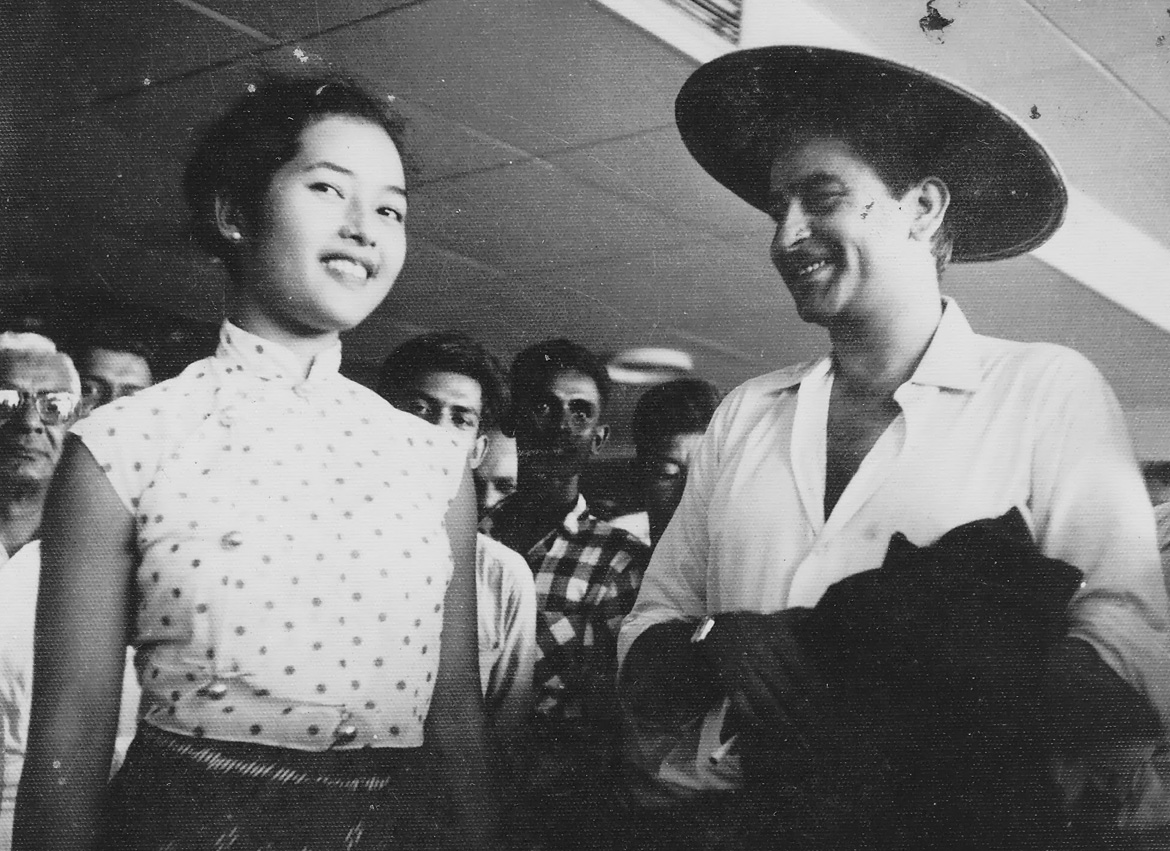The Miss Universe competition is not known for producing ethnic warlords. But Louisa Benson Craig isn’t your average miss. Model, actor, revolutionary, mother; she became the darling of a nation when in 1956 she was crowned Myanmar’s first ever Miss Universe contestant. Less than a decade later, Louisa, an ethnic Karen, was leading the Karen National Liberation Army in their fight for independence against the Burmese forces. After moving to the United States in 1967, she faded from public life. But now, her extraordinary story returns in the novel Miss Burma.
Released in English earlier this year, Miss Burma, written by her daughter Charmaine Craig, is being translated into Myanmar language by editor and translator U Win Nyein.
The book follows the relationship of a Karen women and Jewish man, based on Louisa’s own parents, as they raise their children, one of whom is called Louisa, in the years after World War II.
Amidst the chaos of post independence Myanmar, with the Karen having never received the autonomy promised to them by the British and subsequently taking up arms against the expansionist Burmese forces, 15-year-old Louisa, is crowned the first ever Miss Burma in 1956, then again in 1958.
After receiving her education in the US, Louisa returns to Kayin State in 1964 where she marries her first husband Lin Htin, the commander of the KNLA. When he is killed by the Tatmadaw a year later, Louisa takes the helm of the KNLA’s fifth brigade, leading their armed struggle for independence.
In 1967 Louisa left Myanmar and returned to the US to marry Glenn Campbell Craig, her former classmate at Tufts University, to whom she had three children.
Charmaine Craig, the author of the book, told the Myanmar Times in an email interview that, despite her being quiet about her past, she was always aware of her mother’s story. In part because her American father was ever eager to recall the legend.
Charmaine fondly remembers her mother, Louisa, as a very modest and spiritual person. Sometimes, as a child, she would wonder how someone with such a self-effacing persona could have been under the spotlight of the stage or fighting on the frontline. “Writing the book was a way for me to explore some of her contradictions and to learn more about her and her native country,” she said.
Louisa, Charmaine remembers, loved to speak of her childhood in Insein township, especially those years after World War II and before the outbreak of the civil war, when she and her family enjoyed a brief period of peace and prosperity.
She would teach her the sayings, superstitions and values of her people, the Karen, as well as those of the Burmese. She also talked devotedly of the Karen soldiers she’d left behind when she came to the United States.
“She never left her sense of duty toward her people and the peoples of Myanmar at large,” said Charmaine.
In her early twenties Charmaine visited refugee areas in Thailand and also Kayin State along the Thai-Myanmar border. She returned to the border areas briefly in 2012.
Charmaine inherited her mother’s humility. And yet, like her mother, who appeared in a number of Myanmar films, she also was drawn to acting. “It’s a strange thing to be an actor when one values privacy and modesty,” she said.
In Hollywood, Charmaine was lucky to receive a couple of leading roles. Most notably as the live-action reference for Disney’s Pocahontas.
“In the end, I left that life because the parts for which I was being considered mostly trucked in stereotypes and embarrassed me.” For the daughter of a Miss Universe turned armed rebel, stereotypes must, indeed, be an oddity.
“I have been much happier in the freedom and relative obscurity of my writing life. I suppose, as my mother did in her political work, I have discovered a more authentic way to shine a light on that which is hidden, though my service isn’t as obviously altruistic,” she said.
“Before I read Miss Burma, I thought it was a light story of Naw Louisa Benson. When I dug deeper, I learnt it was not just about Naw Louisa, but her parents, and politics is pushed into the background. It’s quite tough,” said U Win Nyein, who has been given the difficult task of translating the book .
Louisa Benson Craig passed away in California in 2010 aged 69, but “her memory lives on”, says U Win Nyein. Louisa was fa mous for her beauty, he explains. No doubt Miss Burma will help go beyond that.
...........................................................................................................................
The Myanmar language translation of Miss Burma is expected to be finished by the end of the year.




















